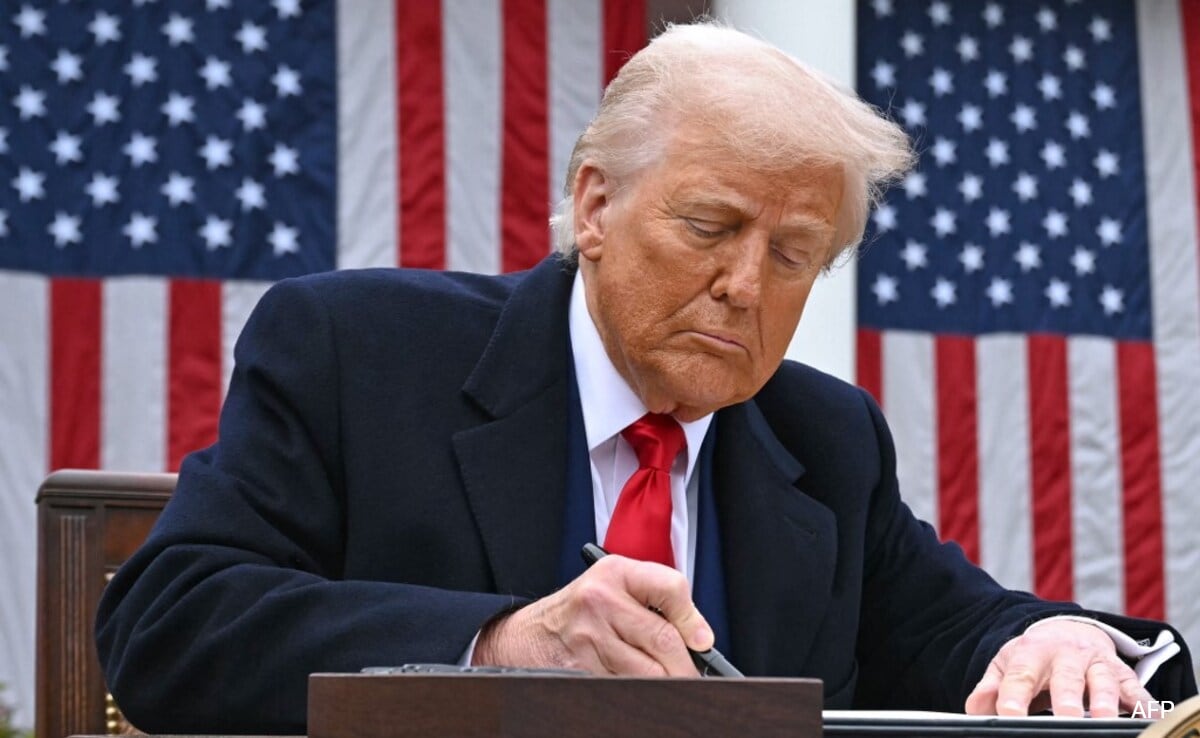Understanding the Impact of Trump’s Reciprocal Tariffs on Global Trade
In a bold move to recalibrate international trade relations, President Donald Trump announced a new set of reciprocal tariffs on April 2, 2023. This announcement affects numerous countries around the globe, imposing tariffs as high as 90% on certain imports. The measures were introduced during a press conference, with Trump emphasizing the need to balance trade disparities and spur American manufacturing. As global economies reel from the effects of these tariffs, many are left wondering about their implications on international trade dynamics.
Who is affected? The tariffs target a wide range of countries, from Afghanistan to Zimbabwe, impacting both developed and developing nations. The U.S. government made it clear that all nations will face a minimum tariff of 10%, while many countries with high barriers to U.S. goods will see significantly higher rates applied. When will these tariffs take effect? The tariffs are set to be enforced immediately as part of the administration’s ongoing efforts to renegotiate trade agreements and build a more favorable trade environment for American businesses.
Moreover, the rationale behind these tariffs is rooted in the administration’s belief that existing international trade agreements often favor foreign nations at the expense of American industries. This strategy aims to encourage foreign countries to lower their barriers to U.S. goods, ultimately fostering a more equitable trading landscape.
Details on Tariff Breakdowns and Exemptions
The list of countries impacted by the reciprocal tariffs is extensive, showcasing a range of tariff rates assigned based on perceived trade imbalances. For instance, Afghanistan tops the list with a staggering 49% tariff, while countries like Algeria and Bangladesh follow closely with rates of 59% and 74%, respectively. In stark contrast, countries such as Canada and Mexico are exempt from these new tariffs, following pre-existing agreements that stipulate different conditions.
Exemptions are also noted for specific sectors deemed crucial for the U.S. economy, including steel, aluminum, automobiles, pharmaceuticals, semiconductors, and lumber. For these industries, tariffs will either be based on previously established rates or determined in the near future. The comprehensive list illustrates a calculated approach by the administration to level the playing field in international trade, although critics argue it could lead to retaliatory actions from affected nations.
The announcement has reignited debates regarding the effectiveness of tariffs as a tool for economic growth versus the risk of escalating trade wars. Some experts suggest that while tariffs could temporarily protect American manufacturers, they may also harm consumers due to increased prices and limited product choices.
Implications of the Tariffs on Global Markets
As the dust settles on the announcement, analysts are closely monitoring the effects of these tariffs on global markets. The new rates have sparked immediate backlash from several nations, leading to concerns about potential retaliatory tariffs that can spiral into full-blown trade wars. Countries affected may respond with their own tariffs on U.S. goods, potentially undermining American exports and affecting the global supply chain.
This strategy also demonstrates Trump’s intention to fortify his “America First” agenda while simultaneously appealing to his political base. However, the global economy is a complex web of interconnected markets. Disruptions in one area can have reverberating effects across the board. For instance, higher tariffs on imports from countries like China—where the U.S. had already imposed substantial tariffs—may lead to increased operational costs for American businesses reliant on foreign components.
The anticipated consequences of these tariffs extend beyond economic implications. They could also strain diplomatic relationships between the U.S. and various nations, notably those that have historically partnered with America for trade. The fragile balance of international relations could be further tested as countries navigate the new tariff landscape while attempting to protect their interests.
Expert Opinions and Future Predictions
Economic experts and trade analysts express varied opinions regarding the long-term consequences of Trump’s tariffs. Some argue that the tariffs will ultimately benefit American manufacturers by prompting them to ramp up production domestically, while others caution about the potential for increased inflation and limited availability of goods in U.S. markets.
According to a recent[report by the Brookings Institution](https://www.brookings.edu), the immediate effects of the tariffs may disrupt supply chains and increase costs for both manufacturers and consumers. They emphasize that tariff-based measures must be approached cautiously, as they may elicit unintended economic consequences.
Moreover, leading economists point out that the insular approach may contravene the spirit of global cooperation needed to tackle pressing issues like climate change and public health crises. As countries tighten borders and engage in protectionist policies, the collaborative efforts required to solve global challenges suffer.
Navigating Through Tariff Winds
As businesses, policymakers, and consumers adjust to this new reality, it becomes paramount for key stakeholders to stay informed about developments in trade policies. Businesses must brace for potential fluctuations in costs and strategize on how best to mitigate the effects of the tariffs. Strategies could range from sourcing materials locally to innovating product offerings tailored to evolving market demands.
Consumers will likewise feel the pinch, as heightened tariffs could lead to increased prices for everyday goods. Engaging with local businesses and advocating for fair trade practices can empower communities while fostering resilience in the face of uncertain economic landscapes.
In summary, Trump’s reciprocal tariffs present a pivotal juncture in U.S. trade policy that could redefine international trade relations. As stakeholders navigate the complexities that arise from these measures, remaining proactive and informed is essential to weather the storm of tariffs. The unfolding situation underscores the need for ongoing dialogue between nations, as well as between government and industry, to collectively foster a more balanced and prosperous global economy.
DISCLAIMER
We have taken every measure to ensure that the information in this article and on our social media platforms is accurate, verified, and obtained from reliable sources. For feedback or complaints, please contact us at info@hamslive.com.


